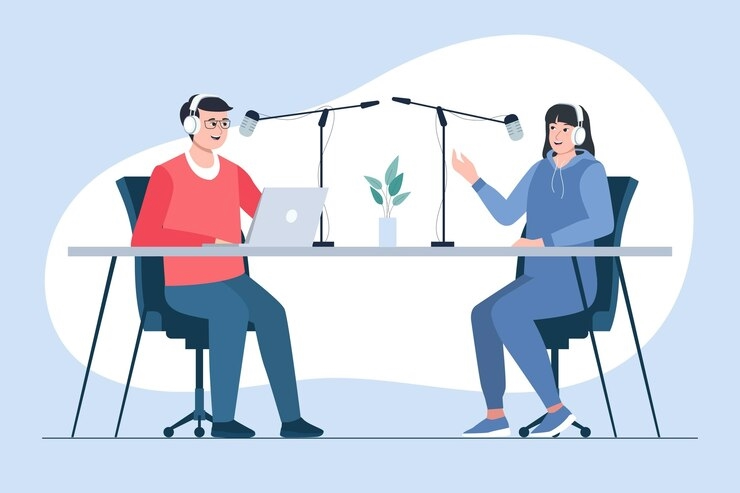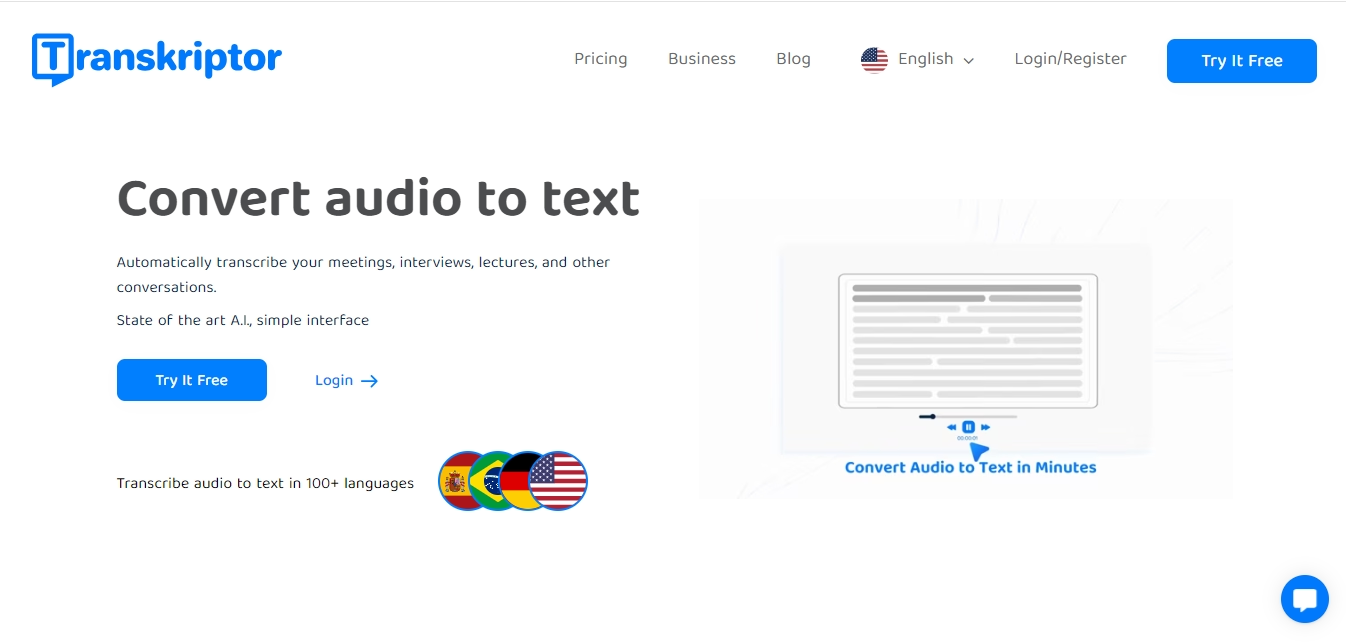Transcribing interviews not only provides an accurate record of the conversation but also makes conversation analysis easier. In this article, you will learn why transcribing interviews is important and the various transcription formats. Also, I know how to use AI tools like Transkriptor, which can generate reliable transcripts.
Critical Guidelines for Accurate Interview Transcription
As a researcher or a student, you might wonder how to interview for a dissertation . Transcription accuracy is a priority to convey the correct meaning of your video files in textual form. However, no transcription method results in a 100% accuracy rate. One error within a sentence can completely change its meaning.
When you engage in a discussion, the language should be coherent. The right tools, setup, and workflow achieve consistency in transcriptions. The sound of the audio should remain clear throughout the recording. Some good AI-generated transcription software, like Transkriptor, can generate a transcript consistent with grammar and spelling.

There are two main transcription formats: Full verbatim and clean verbatim. In a full verbatim format, there is a word-for-word transcription of the spoken language. This includes filler words like “um” and incomplete sentences.
The transcription filters the spoken language in a clean verbatim format. Here, the primary purpose is to extract the meaning of what speakers say. We usually omit filler words and sounds like coughing during clean verbatim format.
Full Verbatim vs. Clean Verbatim
Transcription in company meetings can be helpful for you as a professional. Professions that support legal and business requirements rely on verbatim transcripts to document the interaction.
Complete verbatim transcription captures every word and syllable in the audio recording file. This means that the transcriptionist transcribes everything they hear on the recording. Some examples of complete verbatim transcription include interviews, witness testimony, and more. It includes pauses, stutters, spoken words, and other sounds.
Interviewers and legal professionals mostly use dictation for complete verbatim transcription. In legal proceedings, every word counts; hence, they require a detailed standard for transcripts. In a case, an interview, a deposition, and a witness statement are the evidence.

Another use case for verbatim transcription is interviews, such as police witness interviews. Verbatim transcripts can help interviewers give an accurate record of noteworthy subjects. HR teams can also use this format to speak to potential hires.
A clean verbatim or non-verbatim transcription excludes all unnecessary speech. This format intends to make the transcript more readable without changing its meaning.
In court reporting agencies, people who manage proceedings want clean verbatim while transcribing court statements. False starts or stutters would not work here.
Common Transcription Symbols
Several symbols, such as commas, ellipses, and brackets, indicate various aspects of the spoken language in transcription.
Commas (,): In transcription, a pair of commas is used in the middle of a sentence. This is used to set off phrases and words that are not essential. It separates two or more coordinate adjectives that describe the same noun. Remember not to use commas between the final adjective or with non-coordinate adjectives.
Ellipses (...): An ellipse is not used before or after the quotation. This applies even if it is taken from a larger material body. However, if you remove the beginning or end of a long indented quote, you need to use an ellipse. Another way of using an ellipse is to use it as a pause in direct speech.
Brackets []: The transcription adds words in brackets to indicate what the reader did not mention. Phonetic transcription is written using square brackets, for instance. An example would be to transcribe the word dog as [dɔg].
How to Transcribe Interview Audio to Text Efficiently
The purpose of transcripts is to enhance the translation of derivative content. High-quality transcription comes down to proper preparation, tools, and audio setup. Here are the steps you can follow to ensure precise audio before transcription begins:
Prepare and Plan Your Interview
Preparing a script before recording content, such as a speech or a presentation.
Keep Check of the Environment
The best way to improve the transcription quality is to check the audio quality from start to end. While recording audio, the background noise and other ambient sounds should be minimal.
Select the Right Audio Equipment
Selecting the right equipment, such as a microphone, studio setup, and software, can improve transcription quality.
For a detailed step-by-step guide on transcribing interviews and insights into useful transcription software, refer to Scribbr's comprehensive article .

Dealing with Audio Quality Issues
As a demanding task, transcription requires attention to detail. However, the job becomes more challenging when the audio quality is poor. Parameters that contribute to poor audio quality are background noise, low volume, and technical issues. Here are some strategies to handle background noise and technical issues:
- To record high-quality voice, use high-quality recording equipment and conduct the recording in a peaceful environment.
- A faulty microphone or interference can degrade the audio quality. To avoid technical issues, you can test the recording equipment before starting to ensure everything works well.
- Multiple speakers can cause overlapping voices and interruptions, making recognizing individual words or phrases hard. To avoid this, you can use external microphones over built-in devices. These microphones provide better sound quality.
When multiple speakers are placed in an audio or video transcription segment, speaker identification identifies them. This enables one to determine the identity of an unknown speaker and unlock potential within multiple speakers.
- While taking notes, you can use phrases and not complete sentences. Only note the keyword that will help you understand the point.
- Always take notes in your own words and paraphrase in a way that makes sense. This will help you understand and remember what you hear.
- Once you finish taking notes, structure them with headings, subheadings, and numbering. Headings indicate topic areas, and numbering helps distinguish major and minor points.
Tools for Interview Transcription: Software and Techniques
Some essential tools you require for transcription include noise-canceling headphones, a computer, and transcription software like Transkriptor. Noise-canceling headphones can help focus more on the audio by cutting the background noise. You can use Transkriptor for voice-to-text for interview transcription.
Computers with essential word processing software would be enough to simplify transcription tasks to ensure timely tasks. A dedicated transcription software like Transkriptor can help you convert audio to text. Transkriptor is an interview speech-to-text software that uses a simple state-of-the-art AI interface.
Voice-to-Text Software for Interview Transcription
You can record or convert speech into text with interview transcription using speech recognition technology. When you upload a pre-recorded interview into the software, the software turns the word into text that can be used later. While speech recognition technology might not take the exact words, it is 99% accurate. This way, you can edit the output anytime you want.

Using Transkriptor, you can convert audio to text in more than 100 languages. It also has an AI chat assistant feature to help you summarize your automatic transcriptions and get your preferred output.
You can use Transkriptor on mobile, as a web application, and as a Chrome extension. It can automate the transcription process for meeting notes and interviews to ensure easy access to your discussion.
Comparison of Top Interview Transcription Tools
Transkriptor is a top interview transcription software that can automatically transcribe audio to text in over 100 languages. You can also export your file in plain text or subtitles for videos. With the built-in editing tools, you can edit the speaker names and correct any minor mistakes. It ensures 99% accuracy and generates transcripts in minutes.
Otter.ai is another tool that helps you get transcripts and automated summaries. It has a chat support system to get answers for your meetings. However, the tool has mediocre transcription accuracy for complex audio tests. It also supports only UK and US English and is a bit more expensive than other transcription applications.
Sonix is another transcription software that can generate automated transcription in 49+ languages. You can edit and organize your files on any device from anywhere.
However, the trial duration is shorter than many other transcription software. Also, when working on heavy audio files, transcribing audio can become complicated with Sonix.
Best Practices for Editing and Formatting Transcripts
If you need 100% accurate transcripts, it is essential to edit the final draft. Here are some tips for editing and formatting transcripts:
- As a first step, you can adjust the speaker segmentation for easy execution. Next, you can add or remove commas and full stops wherever required.
- In many cases, such as subtitling, content creators use punctuation marks as time anchors. Therefore, it is critical to remove or add punctuation marks to manage the timing of the transcription.
- If you are editing an audio file, you may need to replace or add fragments. Audio files are challenging to transcribe; sometimes, the automatic speech recognition engine does not detect anything useful.
Revisiting the Draft
High-quality recordings without background noise are essential for accurate transcriptions. You have already discovered that using high-quality microphones can significantly enhance the accuracy of a transcribed file.
Add advanced transcription tools to transcribe audio and improve transcription accuracy. But, it is essential to revisit the draft to maintain high accuracy. This way, you can identify potential areas for improvement and make necessary adjustments.
You can also seek client feedback and monitor the quality of your transcriptions regularly.
Formatting the Transcript for Clarity
After you know how to write a transcript, formatting it is a significant part of the process. By formatting the transcript, you can organize it to increase readability and communicate professionalism.
One way to format a transcript is to use timestamps or speaker labels. When using speaker labels, type the speaker's name followed by a colon, insert a space, and then add the text. Remember to capitalize the speaker's name.
Another essential factor to consider while formatting a transcription is leaving space between each paragraph of text. In some documents, you can even consider double spacing. This will help increase readability and make it simple for readers to scan the document.
Conclusion
Following essential interview transcription guidelines is vital to convey the correct meaning of your audio or video. If a transcript or captions contain errors, reading or watching them can be difficult.
Pay close attention to audio levels; the sound and volume must remain consistent throughout the recording. Using Transkriptor, you can convert audio to text in 100+ languages. As one of the best tools for interview transcription, Transkriptor ensures 99% accuracy, saves time by reducing the processing time to half, and generates editable text transcripts.






